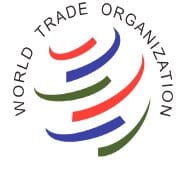WTO Goods Trade Barometer
The latest World Trade Organization Goods Trade Barometer predicted slow growth of global trade in the closing months of 2022 and in 2023 due to strong headwinds.
What is Goods Trade Barometer?
The Goods Trade Barometer was developed by the World Trade Organization to complement conventional trade statistics and forecasts. Previously known as the World Trade Outlook Indicator, it is the world’s leading composite indicator that highlights the turning points in the global merchandise trade and provides forecasts of its likely trajectory in the near future. It is released on a quarterly basis based on the availability of data. It provides real-time data on the trajectory of merchandise trade relative to the current trends. Values higher than 100 indicates above-trend growth and the values less than 100 indicates below-trend growth.
What are the key findings of the latest World Trade Organization Goods Trade Barometer?
- The current Goods Trade Barometer index showed below-trend reading of 96.2. This is a decline from the previous reading of 100. The latest index reflects the declined demand for traded goods.
- Sub-indices like export orders (91.7), air freight (93.3), and electronic components (91.0) showed negative readings. These readings suggest a decline in global import demand and cooling of business sentiments.
- The container shipping (99.3) and raw materials (97.6) indices have lost their momentum despite being only slightly below the trend.
- Automotive products index, with a value of 103.8, showed above trend mainly because of strong vehicle sales in the United States and a rise in exports from Japan due to improved supply conditions and depreciation of Yen.
- The downturn of the latest goods barometer is in line with the WTO’s October trade forecast that predicted merchandise trade volume growth of 3.5 per cent in 2022 and 1 per cent in 2023. The reasons for the slow growth are shocks caused by the war in Ukraine, energy inflation, and monetary tightening in major economies.
Month: Current Affairs – November, 2022
Category: Economy & Banking Current Affairs


